History of Medicine: medicine of the extinct archaic cultures. Medicine of ancient Egypt
The Persian invasion on 539 B.C. marked the end of the Babylonian Empire (which we discussed in the previous post) but today we will go back 3,000 years to analyze the medicine of another great civilization already extinct: ancient Egypt
Ancient Egypt, located between deserts and all along the Nile River, fertile land that was inhabited by a hardworking, creative and very organized people, which not only made possible the construction of great monuments (tombs of the Valley of the Kings, cities like Luxor, Thebes or Karnak) but also the development of a great four-thousand-year-old civilization, whose information was recorded in its monuments or in papyri, where scribes related in hieroglyphic writing everything that happened in the life of the Egyptian world (from the life of Pharaoh to that of the humblest member of the people).
With the discovery of the Rosetta Stone in 1799 (stone that contains the same decree in three writings: Egyptian hieroglyphics in its upper portion, demotic writing in its intermediate portion and ancient Greek in the lower one) and its subsequent study in 1822 by Jean-François Champollion, ancient Egypt is made known to the world, since it was the key to decipher hieroglyphic writing.
In Egypt there were 3 types of writing: Hieroglyphic (sacred), Hieratic and Demotic. Hieroglyphic writing was only available to scribes and was used to write medical texts and funerary religious texts such as the "Book of the Dead".
The attitude of this civilization to death is very important to understand their philosophy of life, they had the idea of the immortal soul and they wanted to enjoy a life after death. When a person die, Osiris judge its actions in life and decide its fate in the hereafter.
The Egyptians prayed to the gods to solve their diseases and doctors were also under the protection of various gods such as Isis, goddess of motherhood, Dyehuty, god of all knowledge, Taueret, protector of pregnant women who helped in the process of childbirth, Sekhmet, goddess of healing, and Imhotep, god of medicine (after being divinized after his death). On the other hand we have Seth (brother of Isis), called the evil, as the cause of diseases.
The Egyptians called the doctors Sun-Nu, which means "the man of those who suffer or are sick" and their diagnoses mixed science, magic and religion.
Some doctors practiced drug therapy, they were called scribes, others were engaged to spells (wizards) but there were also the called "Priests of Sekhmet", which were those who mediated between the patient and the goddess (they celebrated rituals but also they administered drugs). The medical profession demanded an apprenticeship that was most likely given in the "House of Life", belonging to the state and close to the great temples, which also functioned as a sanatorium. There were helpers called ut, who could be considered precursors of nursing.
Doctors in Egypt were organized and their fame spread to Greece and Mesopotamia. Sovereigns of distant lands asked the pharaohs to send them to the Egyptian doctors, because their fame crossed borders. Already the great historian Herodotus said that the practice of medicine is divided in Egypt and there are doctors for each disease, (first reference to specialization in medical fields), so we have: Suno (general practitioner), Suno-Ir (ophthalmologist), Sehedy-Suno (medical inspector), Suno-Generet (Occupational doctor), Sa-Hermen (performed cauterizations). He also noted that there was a great abundance of drugs and that it was the country of the wisest doctors in the world, making special reference to Hesy-Ra (3,000 B.C, a great ophthalmologist). The ophthalmology was very developed because the "ophthalmia of the desert" (today known as Endemic Trachoma) was very frequent.
Special mention deserves the great doctor Imhotep, who lived around 2,700 B.C., vizier of Pharaoh Zoser (of the 3rd dynasty), who was also an architect (builder of the pyramid of Saqqara and the temple of Edfu). He was deified after his death.
Medical care was free and it was the state that paid the doctors. They had to follow a protocol of care, filling out a medical record where the interrogation of the patient, appearance and physical examination were recorded, as well as the inspection of urine, feces, sputum and blood.
The doctors of ancient Egypt classified diseases as follows:
- Those caused by evil spirits.
- Those of obvious cause, such as trauma.
- Those of unknown cause and that they attributed to the punishment of the gods.
The medical knowledge of ancient Egypt has come to us through three fundamental sources:
1)Through paleopathology, since through the study of mummies and other human remains some of the diseases suffered by the Egyptians and their causes of death were known. Some of the diseases found in mummies are: arthritis, osteoarticular tuberculosis, gout, gallstones, schistosomiasis (parasitic disease), syphilis and rickets.
Although embalming was not related to medicine, it deserves to be mentioned, since it shows that there was certain knowledge of anatomy (viscera management).
2)Through the study of the paintings found in temples and tombs that illustrate some of the instruments used.
3)Through the interpretation of the papyri, which has become the main source of knowledge. The papyri bear the names of their discoverers, of the place where they were found or of the museums where they are. Its content is diverse, some describe prescriptions and magic formulas, others are about specific specialties (gynecology and obstetrics, cardiology, ophthalmology).
I will mention them in chronological order:
Ramesseum papyri (1,900 B.C.): focus on the eyes, gynecology, pediatrics, muscles and tendons (describes techniques for relaxation of rigid limbs).
Kahun papyri (1.900-1.850 B.C.): oriented towards gynecology and obstetrics, veterinary medicine and arithmetic. Describes methods to diagnose pregnancy and to know the sex of the fetus as well as female drugs (vaginal application), such as a contraceptive prepared with crocodile feces, honey and sodium carbonate.
Ebers papyrus (1550 B.C.): it is considered a compilation of various medical specialties such as internal medicine, ophthalmology, dermatology, orthopedics, pathologies of the head (tongue, teeth, nose, ears). It measures more than 20 meters long. Contains anatomy and physiology diagrams of the heart and vessels, describing the heart as the center of life, describes the 48 vessels that go to the whole organism. It mentions 400 drugs, eight hundred formulas (referring to the amount used of each compound). Among the most used compounds are onions, garlic, honey, beer, figs, flax seeds, fennel, myrrh, aloes, saffron, opium and lettuce. Explains many diseases along with their therapy, including those with surgical resolution such as anthrax, lymph nodes with tuberculosis, fistulas, hemorrhoids, tumors, hernias, hydroceles and varicose veins.
Edwin Smith papyrus (1550 B.C.): is of surgical content. It measures 5 meters long and details pathologies such as wounds, fractures, dislocations, burns, abscesses, various tumors. It establishes for the first time the degrees of prognosis (favorable, doubtful and unfavorable), in a similar way to modern medicine. It describes many of the instruments used in surgery. It details 48 surgical cases with injuries to the head, neck, shoulders, breasts and thorax. Contains an extensive experience in fractures, typical of a place where accidents were numerous (construction of the pyramids?).
Hearst papyrus (1550 B.C.): contains master formulas, especially for urinary problems, blood, hair and bites.
London papyrus (1,350 a.C.): contains medical prescriptions and magic rituals.
Berlin papyrus (1,300 a.C.): similar to Ebers papyrus, but with excellent descriptions of the heart and blood vessels.
Chester Beatty papyrus (1300 a.C.): also with medical prescriptions and magic formulas, mainly against headaches and anorectal complaints.
Carlsberg papyrus (1,200 a.C): oriented towards ophthalmology and obstetrics.
As we see ancient Egypt reached great achievements in health and medicine and this, added to what has been achieved in art, architecture and engineering make it one of the civilizations that leaves an eternal and invaluable legacy.
References:
- http://www.cervantesvirtual.com/obra/historia-de-la-medicina/
- http://www.arabworldbooks.com/articles8.htm
- https://www.britannica.com/topic/history-of-medicine
- http://www.cardenashistoriamedicina.net/
- http://paseandohistoria.blogspot.com/2009/06/la-medicina-en-el-antiguo-egipto.html
- https://books.google.co.ve/books?id=lgcSCAAAQBAJ&pg=PA9&lpg=PA9&dq=Axaxazu+(demonio+de+la+ictericia).&source=bl&ots=FuncQyBOaE&sig=uRrIut8Y5mAdc_ASsuZvs0lslbQ&hl=es&sa=X&ved=0ahUKEwjNt_f4t8PZAhUO7FMKHS4PAZIQ6AEIJzAA#v=onepage&q=Axaxazu%20(demonio%20de%20la%20ictericia).&f=false
Previous posts:
- History of Medicine: Prehistoric Medicine
- History of Medicine: medicine of the extinct archaic cultures. Medicine in Mesopotamia

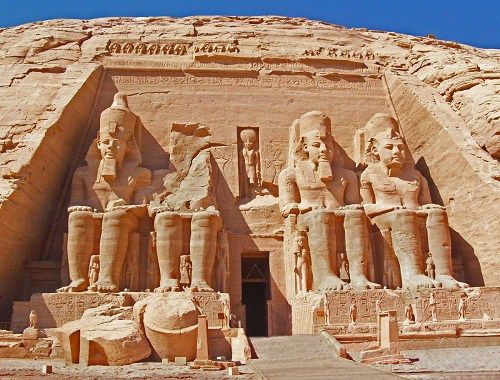
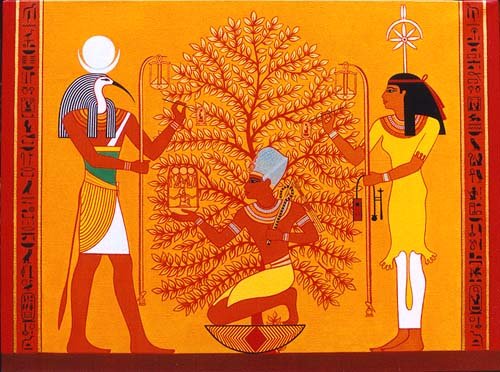
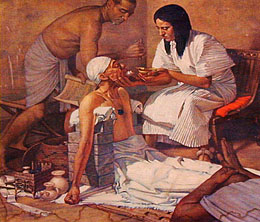
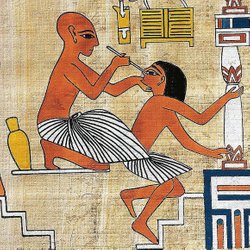
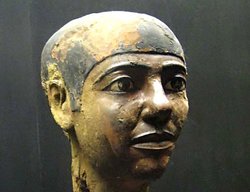
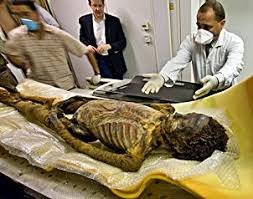
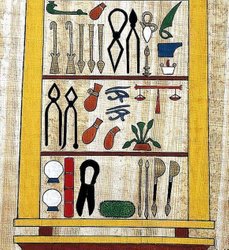
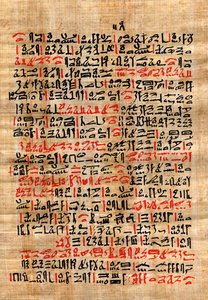
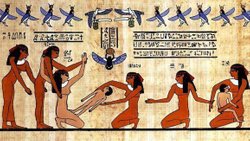
You received a 10.0% upvote since you are not yet a member of geopolis and wrote in the category of "archeology".
To read more about us and what we do, click here.
https://steemit.com/geopolis/@geopolis/geopolis-the-community-for-global-sciences-update-4
Te invitamos a descubrir @reveur.
Delega es un bot por subscripcion sin fines de lucro, que vota a autores seleccionados por quienes lo financian para apoyar su trabajo y reconocer sus esfuerzos. | Si quieres saber mas pregunta en reveur.
Congratulations! This post has been upvoted from the communal account, @minnowsupport, by eleyda78 from the Minnow Support Project. It's a witness project run by aggroed, ausbitbank, teamsteem, theprophet0, someguy123, neoxian, followbtcnews, and netuoso. The goal is to help Steemit grow by supporting Minnows. Please find us at the Peace, Abundance, and Liberty Network (PALnet) Discord Channel. It's a completely public and open space to all members of the Steemit community who voluntarily choose to be there.
If you would like to delegate to the Minnow Support Project you can do so by clicking on the following links: 50SP, 100SP, 250SP, 500SP, 1000SP, 5000SP.
Be sure to leave at least 50SP undelegated on your account.